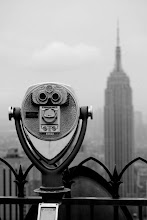Upon visiting the third floor of The Museum of Modern Art (MoMA), I have realized that design has a absolute impact in our everyday lives. I have also learned of the word ergonomics, which is the study of designing equipment and devices that fit the human body, as well as its movements, and its cognitive abilities. This meaning that every device, machine, furniture, and vehicle is designed in that certain way that it is believed to be best suit the needs of a human. To me this is very important because as I walked the third floor of MoMA, I realized how many of the designs and ideas displayed here had “higher functionalities”, while others had “lower functions”.
Of the many designs and ideas I saw at The Museum of Modern Art, two in particular really stood out to me as a “high function” works. To me this means Objects that are important and make our everyday lives, easier, and more livable because of there purpose, ease of use, and simplicity. The first object is “The MetroCard Vending Machine”. I believe that this is a “high function” object because It is a very straight forward machine that displays all your options on a big touch screen and has a very easy to use, user interface. The MTA “MetroCard Vending Machines” lets you choose between four languages. You can then get a metro card out of it or refill a metro card if you already have one very easily and quickly to the value of your choice. It even asks if you want a receipt at the end which is pretty awesome and if you don’t want it, it gets rid of it for you. Metro Card Vending machines primarily help tens and thousands of New Yorkers purchase metro cards everyday to help them get to there destinations. Without them, traveling would be much more difficult and less convenient. My second high functional object is the “AnalogDigital Clock”. This Clock” is a high function object to me because it allows us to just take a glimpse at it and know what time is, as oppose to looking and studying a regular analog clock to get the exact time. The “AnalogDigital Clock” comes into a great use when you slightly awake from your sleep and don't know what time it is so you just glance over at it, notice the time, and then decide to get up or stay in bed depending on whether you have anything important to do or not. “AnalogDigital Clocks” simplify the idea of telling time by helping us recognize time easier, faster, more accurately due to its easier user interface.
However out of all the designs and ideas I came across at MoMa, there were also objects that seemed to have lesser functionality, therefore making them items with “low functions”. To me this means objects that seem they are more difficult to use, are less simplistic, and should have overall less purpose or use in our everyday lives because, there are better versions of that one idea and that idea just does not have any real useful purpose to me. The first lower function design that stuck out to me was the “Sweepers Clock” which basically resembles a traditional Analog Clock with out the numbers making it further difficult to tell the time. The hands of this clock consist of garbage being moved by two men with giant floor sweepers accordingly to the time next to this which is displayed in an Analog Digital format and is called “AnalogDigital Clock”. Although this object was cool, unusual, and artsy, it seemed pointless from my perspective and is more ergonomic through the use of it being a digital clock only. My second low function object was the “SMSlingshot” which can basically shoot digital messages onto building facades and other surfaces, turning them into public messages to be seen by more than one person. They can be removed whenever the controller of the “SMSlingshot” decides to remove it through the screen on it. To me this seems cool at first, but upon thought becomes pointless because i don’t see the real use for this object other than it being displayed at MoMA and to show how far technology has advanced and what we can do with it.
In the end, the overall use of an object as well as its functionality varies by person. I believe that a highly functional object should be simple to use, make our lives easier, and more livable because of what they have to offer. That Art and design are always two separate ideas, and without one the other doesn't exist. However the combination of the two equal to the best possible outcome of an object or item and makes them the most functional
Masamichi Udagawa (Japanese, b. 1964)
and Sigi Moeslinger (Austrian, b. 1968)
of Antenna Design (USA, est. 1997)
David Reinfurt (American, b. 1971)
Kathleen Holman (American, b. 1962)
“MetroCard Vending Machine”
1999
Maarten Baas (Dutch, b. Germany 1978)
“AnalogDigital Clock”
2009
Maarten Baas (Dutch, b. Germany 1978)
“Sweeper’s Clock”
2009
Christian Zollner (German, b. 1981)
Patrick Tobias Fischer (German, b. 1980)
Thilo Hoffman (German, b. 1980)
and Sebastian Piatza (German, b.1985)
of VR/Urban (Germany, est. 2008)
“SMSlingshot
2009
